The NVIDIA GeForce GTX 1660 Review, Feat. EVGA XC GAMING: Turing Stakes Its Claim at $219
by Ryan Smith & Nate Oh on March 14, 2019 9:01 AM ESTCompute & Synthetics
Shifting gears, we'll look at the compute and synthetic aspects of the GTX 1660.
Beginning with CompuBench 2.0, the latest iteration of Kishonti's GPU compute benchmark suite offers a wide array of different practical compute workloads, and we’ve decided to focus on level set segmentation, optical flow modeling, and N-Body physics simulations.
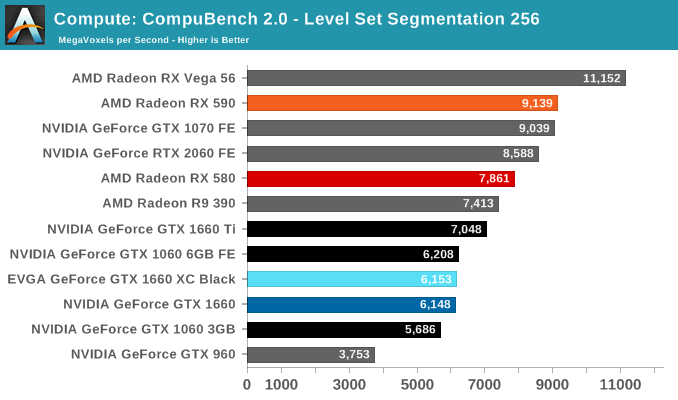
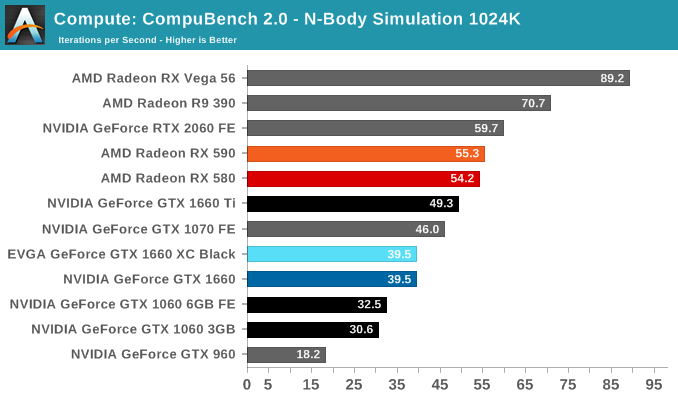
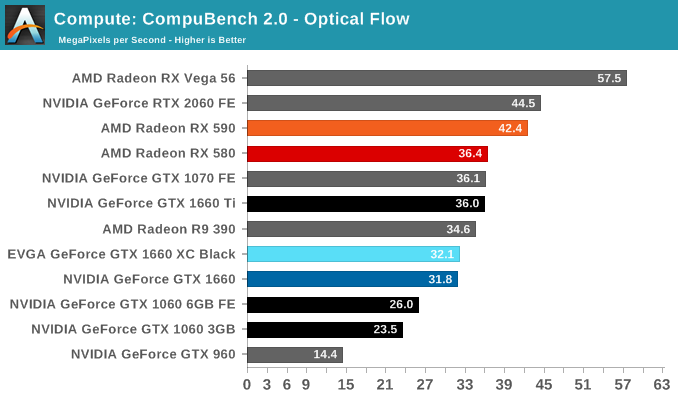
Moving on, we'll also look at single precision floating point performance with FAHBench, the official Folding @ Home benchmark. Folding @ Home is the popular Stanford-backed research and distributed computing initiative that has work distributed to millions of volunteer computers over the internet, each of which is responsible for a tiny slice of a protein folding simulation. FAHBench can test both single precision and double precision floating point performance, with single precision being the most useful metric for most consumer cards due to their low double precision performance.
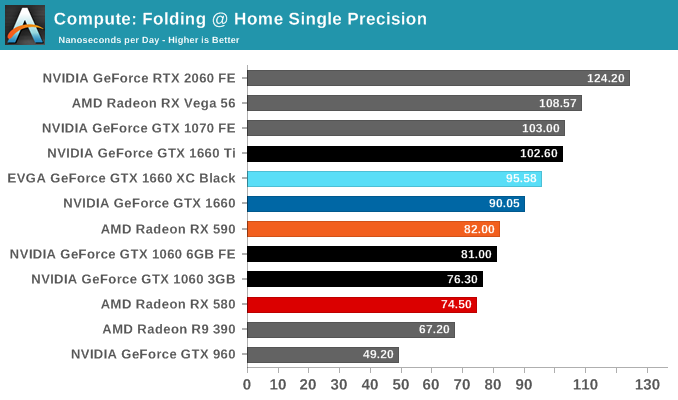
Next is Geekbench 4's GPU compute suite. A multi-faceted test suite, Geekbench 4 runs seven different GPU sub-tests, ranging from face detection to FFTs, and then averages out their scores via their geometric mean. As a result Geekbench 4 isn't testing any one workload, but rather is an average of many different basic workloads.
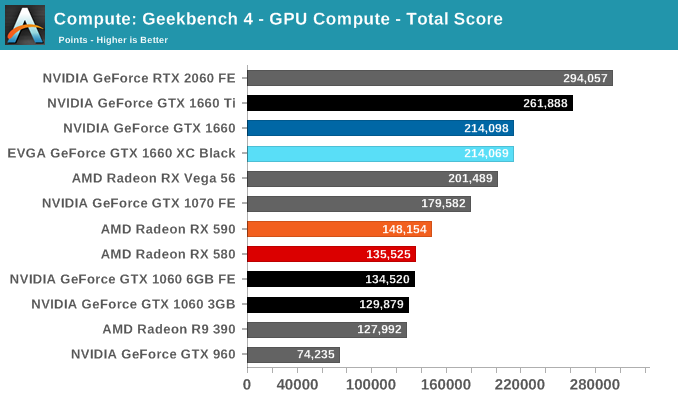
In lieu of Blender, which has yet to officially release a stable version with CUDA 10 support, we have the LuxRender-based LuxMark (OpenCL) and V-Ray (OpenCL and CUDA).
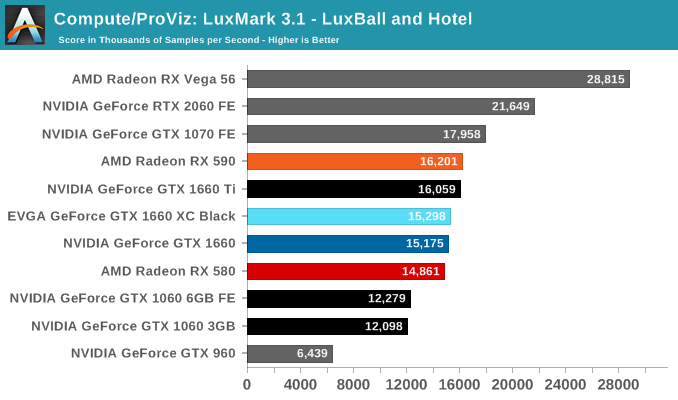
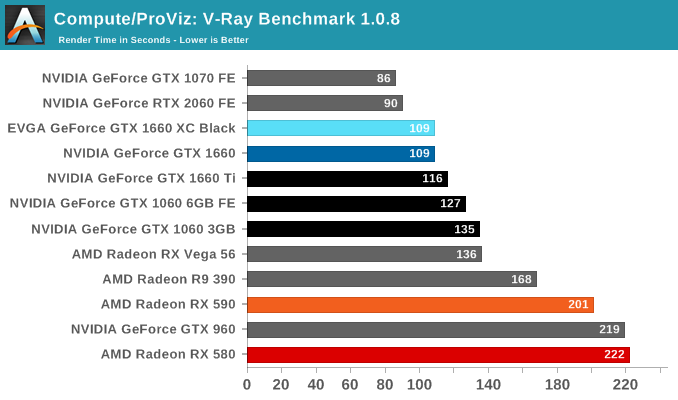
We'll also take a quick look at tessellation performance.
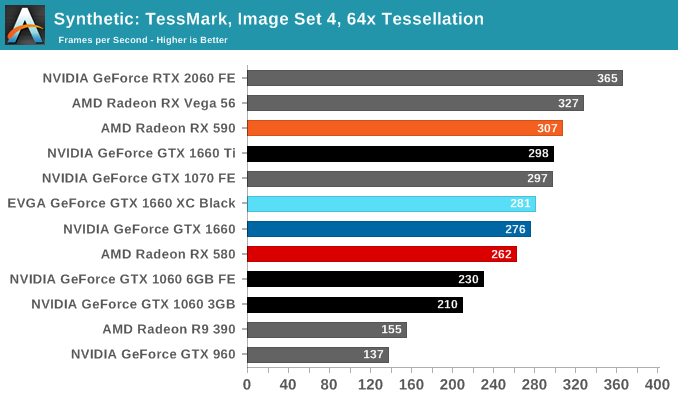
Finally, for looking at texel and pixel fillrate, we have the Beyond3D Test Suite. This test offers a slew of additional tests – many of which we use behind the scenes or in our earlier architectural analysis – but for now we’ll stick to simple pixel and texel fillrates.
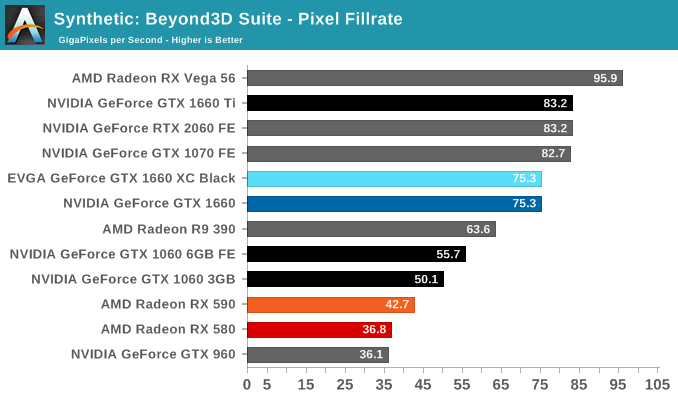
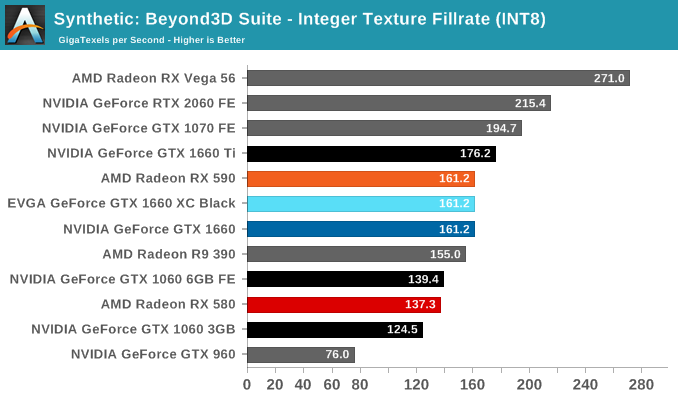
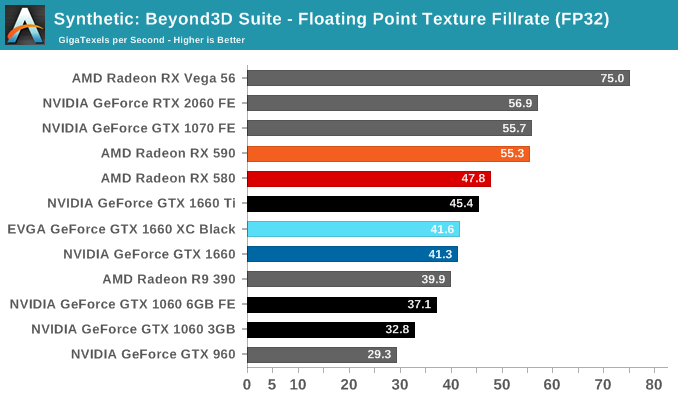










77 Comments
View All Comments
Qasar - Thursday, March 14, 2019 - link
it also depends on if the consoles even have any games some one would want to play... for me.. those games are not on consoles.. they are on a comp... not worth it for me to by a console as it would just sit under my tv unused..D. Lister - Saturday, March 16, 2019 - link
@eva02langley: "...console hardware is more efficient since it is dedicated for gaming only."smh... console hardware used to be more efficient for gaming when console hardware was composed of custom parts. Now, consoles use essentially the same parts as PCs, so that argument doesn't work anymore.
Fact of the matter is, consoles remain competitive in framerate by either cutting down on internal resolution, or graphic quality features, like AA, AF, AO, or in many cases, both res and features. Take a look at the face-offs conducted by the Digital Foundry over at Eurogamers.net.
D. Lister - Saturday, March 16, 2019 - link
@eva02langley: I also find it rather ironic that you, who has often criticized NVidia for not being open-sourced enough with their technologies, are making a case here for consoles that are completely proprietary and closed-off systems.maroon1 - Thursday, March 14, 2019 - link
Faster, consume much less power, smaller and produce less noise than RX590 which cost sameEven if you ignore the performance advantage, the GTX 1660 is still better out of the two. No reason to buy big power hungry GPU when it has no performance advantage
0ldman79 - Thursday, March 14, 2019 - link
What is it with Wolfenstein that kills the 900 series?I mean they're still competitive in almost everything else, but Wolfenstein just buries the 900 series horribly. If it's that bad I'm glad I'm not addicted to that series. I had thought about picking up a copy, but damn...
Opencg - Thursday, March 14, 2019 - link
they may be using some async techniques. the famous example is doom where many 900 series saw worse performance on vulkan due to async being a cpu based driver side implementation.Dribble - Thursday, March 14, 2019 - link
I think it's because it has FP16 code in the shaders - which Turing and newer AMD have hardware support for, but Pascal doesn't. It was AMD's trump card until Turing so you'll find a few AMD sponsored games use FP16.Ryan Smith - Thursday, March 14, 2019 - link
"What is it with Wolfenstein that kills the 900 series?"Memory capacity. It really wants more than 4GB when all of its IQ settings are cranked up, which leaves everything below the GTX 980 Ti a bit short on space.
AustinPowersISU - Thursday, March 14, 2019 - link
Used GTX 1070 still makes the most sense. You can easily get one for less than this card and have much better performance.Nvidia needs to do better.
eva02langley - Thursday, March 14, 2019 - link
It is still their best offering in term of price/performance from Turing. However, yeah, that should have been done way before.